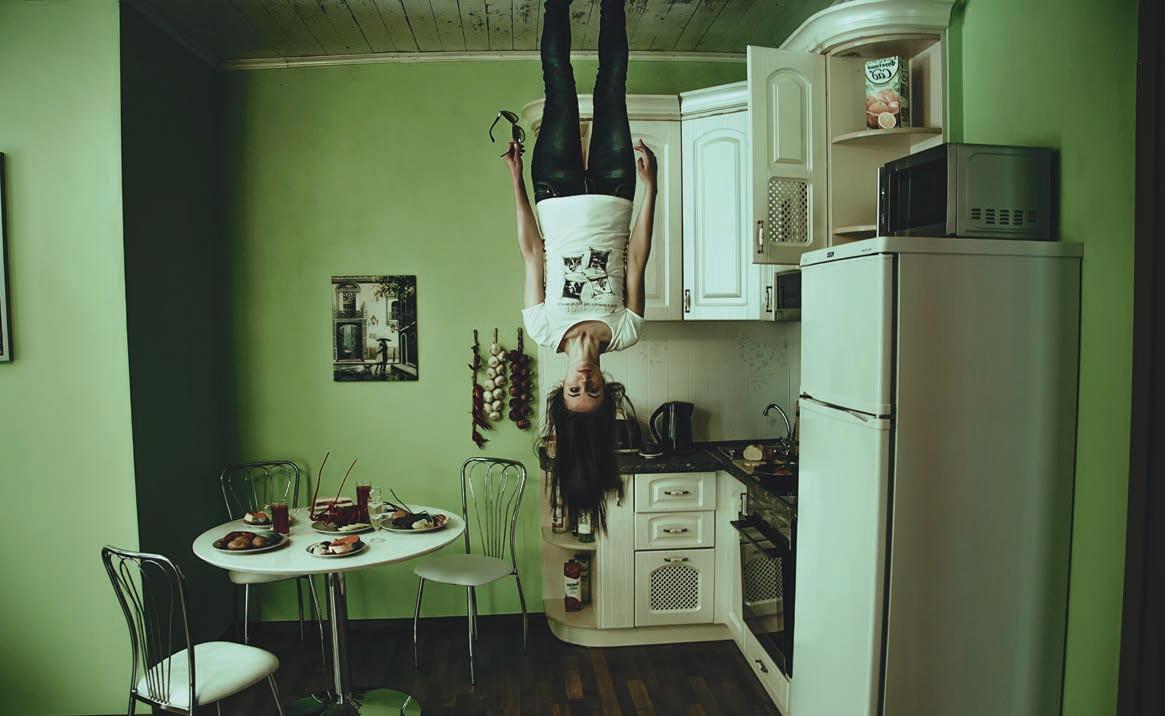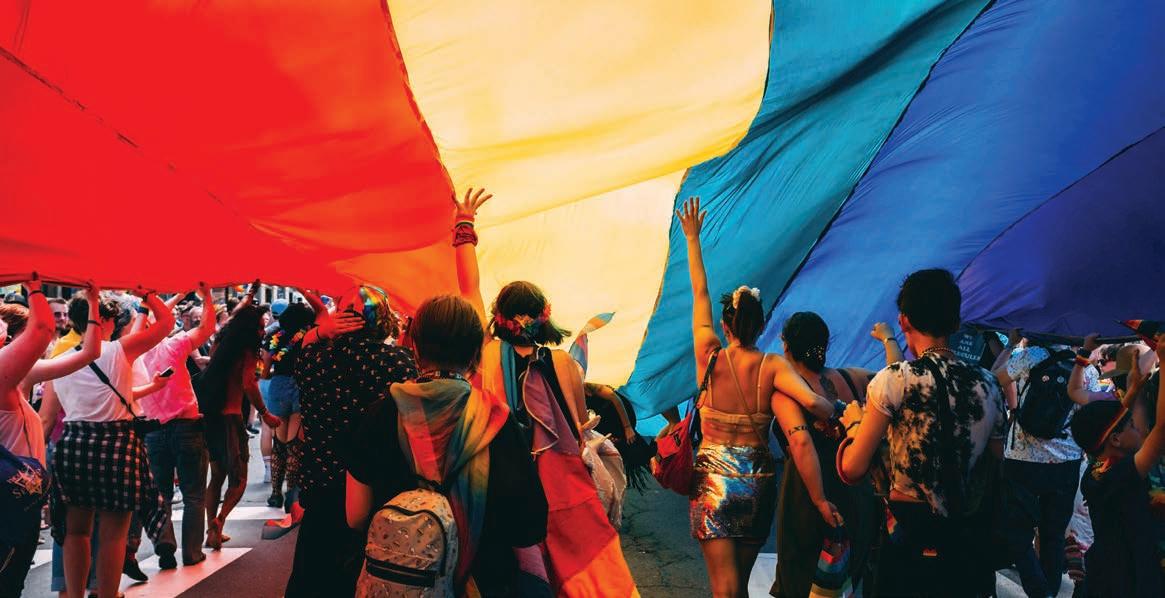
8 minute read
DIVERSITY
Testing times: The International Student Perspective on the impacts of Covid
alicia liM
Advertisement
My offer to study Biomedical Sciences at the University of Western Australia came as a beacon of hope in 2018, during a year of applications to various medical schools located in Singapore as well as in Australia. With the mental and physical toll of academic results, admission tests and interviews behind me, I was ready to take on this new journey as a fresh, bright-eyed university student. The entire process of applying to medical schools had been so tedious that embarking on my medical school journey itself seemed so much easier in comparison.
My first year was pretty amazing, to say the least. I finally got a taste of studying abroad and living independently, in a brand new environment. In the second year, I got the chance to move to a studio room on campus. I had the time of my life, whipping up strange dishes without risking getting scolded by my parents, or bingeing on Christmas movies in February. At that point, I had only been in Perth for about a month, and classes had begun their move online due to the worsening of the COVID outbreak.
My parents were encouraging me to return back to Singapore, saying that I had nothing to lose since classes were already online. If I had gotten sick in Perth, I would be all alone with no family around me. I hurriedly asked some of my fellow Singaporeans living in hall with me, whether they would be returning back home. A staggering majority replied no. I was thoroughly conflicted and knew that if I stayed, my parents would be pretty worried. However, if I went home, I risked being unable to return back to Perth while the other students would move on without me. Eventually, I made the tough decision of deciding to return to Singapore.
The process of adjusting from studying on campus in Perth to studying in my messy little room was quite a complicated one. Studying away from friends wasn’t really a problem as I had always been an independent learner, and never really relied on study groups or study buddies. The issue was the fact that I did not possess a conducive environment for doing any sort of work. My desk had been taken over with a large TV and the dining table wasn’t the best option either. I decided that I had to take action if I wanted to be able to work efficiently back home. My first arduous task was to clean up the unidentifiable pile of items on the floor of my room. The pile had grown pretty tall and intimidating over the years. A lot of decluttering and chucking away to other areas was involved. When the pile finally disappeared, I bought a tiny desk that could fit just in between the little area between my cupboard and my bed. Although tiny, it served its purpose just as well as any other desk would.
I was lucky that both Singapore and Perth share the same time zone. Hence, there wasn’t an issue with live tutorials and workshops. One of my biggest challenges was trying to complete the weeks’ worth of lectures and quizzes during their dedicated week. I had multiple checklists all over the place, both digitally and physically. As someone who usually attends my lectures in-person at a fixed day and time, I had to set up a system to ensure that I attended all my classes. This system worked pretty decently in the end. Another cause for concern was the fact that I had to juggle my duties as a university student with my everyday duties of being a fellow member of my family household. Although this may sound slightly exaggerated, you won’t understand how these little mundane tasks can affect your ability to concentrate on university work unless you have experienced it. I resolved this issue by locking myself in my room at a dedicated time frame every day, committing myself to finishing up any work within those few hours. As for social life, it was definitely a struggle for me seeing my friends back in Perth having fun at various events and outings. Undoubtedly, I was suffering from a severe case of ‘FOMO.’ I had to remind myself that these were events that I might not have even gone to even if I were still back in Perth, being a certified homebody. I also had my lovely family and dogs around me, so that helped to ease those feelings a little more.
The COVID outbreak has certainly taught me to more adaptable to new situations by making the best of what I have. It has also taught me to be grateful for what I have. I do hope to return back to Perth for the remainder of my studies, but for now, my little desk will have to do.

We Need to Talk About the Lack of LGBTQ+ Visibility in AFL
JaMieson kay is an English grad trying hard to break stereotypes and work anywhere beside Maccas.
The Australian Football League (AFL) prides itself on inclusivity, but in the 124 years of the game, not one player in the men’s league has ever openly identified as LGBTQ. Here’s why that matters for Australia’s national sport.
In the latest season of I’m a Celebrity, Get Me Out of Here! openly gay singer Jack Vidgen, in conversation with retired AFL players Travis Varcoe and Robert “Dipper” DiPierdomenico revealed he was aware of “about ten or twelve” professional AFL players who were gay but would never come out because, “it would be a really hard thing to go through in that industry.” Witnessing this conversation was another stark reminder to me, and to the wider Australian community, that despite ‘pride round’ and assurances from the AFL that it supports the queer community, our national game still has a long way to go when it comes to creating an environment that is safe and welcoming to LGBTQ+ footballers - particularly in the men’s leagues.
The AFL brands itself as Australia’s game. It promotes itself as inclusive, multicultural, and diverse, because it believes these ideals reflect those of the Australian community. But if the AFL wants to reflect the Australian community, then you have to ask why, through hundreds of
years and tens of thousands of players, none have ever publicly come out. Other sports, including cricket, rugby, and tennis, have seen players embrace their sexuality publicly.
A study by VicHealth indicated that homophobia and toxic masculinity within the sporting industry directly led to gay athletes feeling they must “pass as heterosexual, or leave the game”. It went on to say, “abuse of men who were suspected of non-heterosexuality could be serious”, and therefore that men participating in team sports were significantly less likely to come out.
The AFL relies upon building a spirit of camaraderie and closeness, including emotional and physical affection, that only exists within the context of the team. This closeness is jeopardised if all members of the group are not seen as heterosexual. It transforms the closeness from masculine camaraderie to what could be seen as engaging in ‘homosexual behaviour’.
This is what Vidgen refers to when he says “it [coming out] would be a hard thing to go through in that industry”. Top down, through and through, the AFL as a sporting institution relies upon the continued exaggerated heterosexuality of its players to legitimise its rituals and keep the sporting realm firmly ingrained in the masculine. Homophobia is deeply entrenched, and validated, within the AFL system.
Of course, all people are entitled to privacy when it comes to their sexuality, and if any member of the AFL just prefers to keep their sexuality private, that’s valid. But, in turn, it’s also fair to wonder why it is that so few players - even former players - have ever spoken publicly about being gay. Sexuality is very public in the AFL - from Brownlow red carpet to interviewing players’ wives and girlfriends after games. We know LGTBQ+ athletes exist, but we never hear from them. They are invisible. You have to think there is something more complex in play than simply a desire for privacy.
Jason Ball, an LGBTQ+ activist, and exfootball player at the local level, has been advocating for better representation in the AFL. He has noted that the tolerance of homophobic and transphobic slurs on the field and the lack of internal and community support for LGBTQ+ players contributes to a culture of fear around expressing non-heterosexuality. The AFL media’s poor response to lesbian footballers in the AFLW, and an ongoing discrimination lawsuit by transgender player Hannah Mouncey have also not helped the sport’s image in recent times.
And it is hardly surprising; the AFL is embedded in a part of Australian culture that valorises masculinity. The Australian community is not ready to challenge the notion that gay men are inherently less masculine than their heterosexual counterparts, and they are not ready to challenge the traditional, ‘blokey’ idea of masculinity in Australian culture which is epitomised in the AFL. It’s time that the AFL took radical action to change that because, at the moment, progress is moving slowly.
If the AFL imagines itself as Australia’s sport, brands itself as a game which brings people together, and is welcoming to all, the invisibility of its LGBTQ+ athletes has to matter. It’s 2021, it’s time to admit there are children and teenagers growing up who love AFL, identify as LGBTQ+, and are relying on sporting idols and how they respond to these issues.









